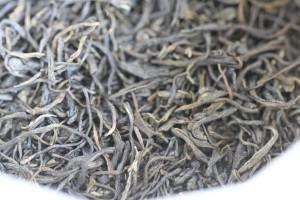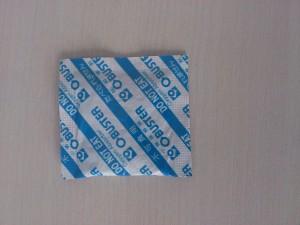As mentioned in a previous post, one of the often overlooked factors that affect the taste of our tea is the storage of the tea leaves- preventing degradation in taste. Earlier we have written about general storage tips and guidelines but in this post we will focus on storage of green tea specifically.
As green tea is completely un-oxidized, the effects of poorly stored green tea can be seen by the naked eye, a ‘browning’ of the leaves as well as a darker liquor of brewed green tea as opposed to the pale greenish hues that characterizes most green teas.

5 Elements that Affects Tea Storage
1) Heat
Heat causes amino acids, polyphenols, carbohydrates and other compounds in green tea to decompose and hence affects the aroma, taste and quality of tea leaves.
2) Light
Light increases the oxidation of lipids and pigments in tea leaves as well as decomposes chlorophyll.
3) Moisture
Tea leaves are a powerful desiccant and absorbs moisture in the air. High moisture content then leads to mildew growth.
4) Oxygen
Polyphenols are one of the main compounds in tea. Depending on its proportion with amino acid and carbohydrates, it affects the taste, mouth feel and refreshing quality of tea. However polyphenols, especially cathechins which constitutes approximately 70% of all polyphenol compounds is very prone to oxidation during storage and this process is accentuated by heat and moisture.
The oxidation of polyphenols and amino acids can also be lead to a darkening in the leaves and liquor as well as a lack of body and refreshing feel in the tea.
5) Odors
Tea absorbs smells so store away from other smells
Storage
Knowing what to combat gives us a better indication of how to best store green tea.
Vacuum Seal
Vacuum packing teas is a very effective way of prolonging the shelf life of tea. It removes most of the air and hence oxygen from the package and when paired with an opaque, non-permeable packing material, it protects teas from oxygen, odors and moisture.
However once the seal is opened the protection ceases. Also, dry tea leaves are brittle. Vacuum sealing works well for beaded leaves like Taiwanese and Minnan Oolong but are a sure way of crushing your Longjing tea.
Where the shape is possible to be vacuum sealed, such as Xinyang Maojian, it’s a great way to store but it’s not always workable.
Desiccants and Oxygen Absorbers

For better effect, oxygen absorbers are often used in tandem with vacuum sealed packages but again its effects only apply while the seal remains.
Refrigerators
One of the most useful means of prolonging the life of green tea is using an appliance that is available in most households- a refrigerator.
On many sites this method is frown upon as naysayers cite moisture and the presence of other odors in the fridge as reasons why this doesn’t work.
However it’s just a matter of solving THOSE problems for the benefits of storing in a refrigerator outweighs the hassle.
Left at room temperature, within 2-3 months the oxidation of polyphenols and other chemical compounds results in the green tea losing its fresh taste and much of its aroma.
Because oxidation increase 3-5 times with every 10°c increase in temperature, tea leaves are best stored at 0-8°C. If the moisture content of the tea leaves in question are kept at 6% and below, green teas can easily be stored for 12 months and above with no discernible loss in quality.
However the issue is keeping moisture and other odors out. To that end, the leaves should be stored in a non-permeable pack which is tightly sealed. Then seal it in another food grade packet or container that is airtight and free from odors.
When the leaves are removed from the refrigerator, it is best to let it set for about half an hour until it returns to room temperature otherwise there will be condensation when the cold items comes in contact with warm room temperature.
For convenience, I would suggest removing a quantity which can be consumed within 1-2 months to be stored normally and keeping the rest untouched in the fridge. Once the said quantity has been consumed, repeat and refill until the leaves are gone. This prevents frequent opening and resealing of the package and preserves the freshness better.
You can experiment keeping a small quantity of quality green tea leaves in and out of a fridge for 3-4 months and comparing side by side. You will be surprised what a big difference there is.
Storing green tea maybe trickier but savoring the refreshing sweetness is worth it.
See other articles on Selection and Storage of Tea
Information obtained from:
1) Mingyou Chaye- Shengchan yu Jiagong Jisu by Luo Yaoping Published by China Agriculture Press
2) Chadian Jingying yu Wangdian Yingxiao by Zhang Xinghai Published by Zhejiang Gongshang University Press
